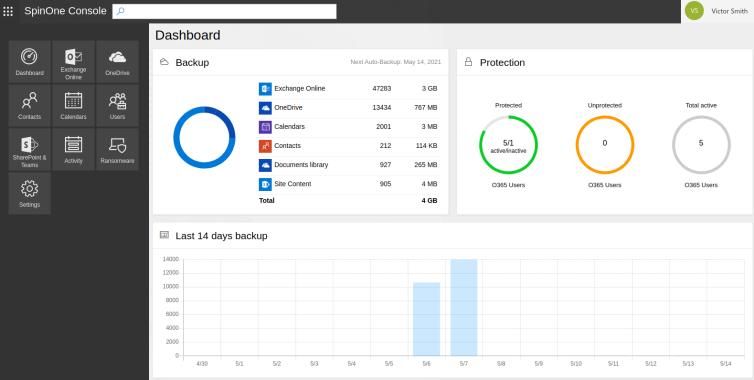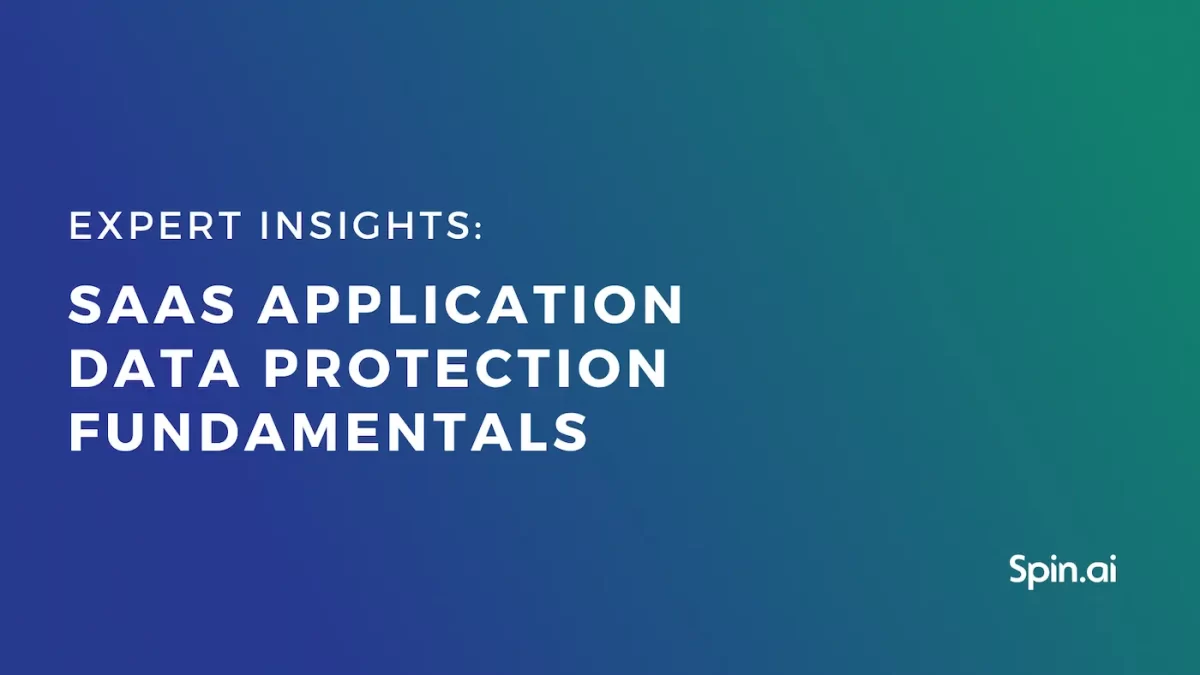Difference Between Cloud Storage and Backup and Cloud Sync

Cloud technology has been evolving rapidly. It’s hard for some businesses to keep up with this pace. In the present article, we’ll explain the difference between cloud storage and backup and cloud sync. We’ll also take a closer look at each technology separately and explain for what purposes they can serve your company.
Why Are Cloud Services So Often Misunderstood?
Many products today are marketed with the word “cloud.” It seems like every digital solution today is a cloud service.
What are cloud services anyway? The term cloud makes you think of a computer in the sky. While we know we don’t have datacenters floating above us, the cloud is a term that describes a service provided in someone else’s data center. The “someone else” here is generally big cloud providers like Google, Amazon, or Microsoft.
Cloud services store your data across many servers around the world. Many smaller “cloud” based solutions actually use some of the bigger cloud providers as the platform for their services.
How various companies and services market their solutions and how they work can misconstrue the true intent and purpose of the application. As an example, cloud storage is often marketed as “cloud backup”. Cloud sync is often marketed along with “cloud storage”. As a user, it becomes increasingly difficult to choose the appropriate cloud-based service to accomplish what you want to do.
Let’s take a moment and examine cloud sync, cloud storage, and cloud backup and see what they are exactly and how they can be used.
The Difference Between Cloud Storage and Backup and Cloud Sync
Despite being sometimes confused or used interchangeably, each of the terms has a distinct meaning.
What is Cloud Storage?
Cloud storage is tightly connected for many with cloud sync and rightly so. Generally, users combine the two types of services/solutions to provide the functionality they need for keeping local files synced up with their cloud environment. As mentioned earlier, popular cloud sync services store the synchronized files inside of cloud storage.
Popular cloud storage solutions include the likes of Google Drive, Microsoft OneDrive, Dropbox, Box, and others. The appeal of cloud storage vs on-premises or removable storage is the fact that cloud storage is accessible from anywhere and any device, unlike traditional storage. This holds many advantages, including flexibility, accessibility, and efficiency. The only general requirement for your device to access cloud storage is connectivity to the Internet.
To access cloud storage, most cloud providers have custom applications that interface with the cloud storage service and allow synchronizing files. Most cloud storage vendors have mobile applications as well that provide many, if not all of the same features that are available from a workstation.
Cloud storage:
- Easy access to files from anywhere or any device
- Not limited in scale, if you need more, you can purchase it
- Can be interfaced with via cloud sync utilities
- Offers very limited versioning
- A better solution than carrying around removable storage
When do you need cloud storage?
The main benefit of using cloud storage is high accessibility. Cloud storage is a storage space you have access to from anywhere or any device. As long as you have connectivity via the Internet, you can access your public cloud storage.
What is Cloud Sync?
Cloud sync is a tool that many users have used in some form or fashion and it is connected with cloud storage by default. Cloud sync refers to a service/tool that generally synchronizes files that exist on your local device (PC, mobile, etc) with a cloud storage location provided by the cloud synchronization service. Think of cloud sync as the vehicle to move your data to cloud storage.
There are cloud synchronization services such as Dropbox, Box, and others that are standalone services just for this purpose. They offer a utility that installs on your device that connects you with your cloud storage location. Any files you place locally in the folder provided by the synchronization utility is automatically synchronized to your cloud storage.
Google and Microsoft offer a tool connected with their broader cloud service solutions. Google offers Google Drive and Microsoft offers OneDrive. Google has a cloud sync utility called Google “Backup and Sync” and Microsoft uses their OneDrive utility that is built into modern Windows client operating systems. Both also have mobile apps that provide integration as well.
The “sync” portion of a cloud sync tool helps to indicate the functionality that is contained. However, as mentioned, marketing such as Google’s backup and sync may lead one to believe the tool provides true backup features. The problem with assuming the cloud sync is a backup is that you assume you have a way to get data back that is contained in your cloud folder.
This is not really true. While Google and Microsoft provide limited versioning functionality, after a number of days, you have no way to recover data. Cloud sync should be thought of as just that – a way to synchronize your local files and store them in a cloud location.
Cloud sync:
- Uses a tool to keep files in sync
- Syncs from local to cloud, not the other way
- Backed by cloud storage
- Not a true backup of your data
- Provides accessibility and flexibility in accessing your data from anywhere
When Do You Need Cloud Sync?
Cloud sync is a “vehicle” rather than a “storage” location. It is a type of service that allows synchronizing copies of your data from a local device up to your “cloud storage”. Cloud storage is the target of cloud sync utilities that synchronize your files.
What is Cloud Backup?
As mentioned, many cloud services or synchronization tools may use the word backup to define the tool as a proper backup. However, this is a misrepresentation of backup functionality. Overall, there are three backup approaches:
- Cloud backup is a copy of your data, stored off-site for emergency recovery.
- Cloud-to-cloud backup is an advanced cloud backup implementation. C2C is geared towards protecting data, already stored in the cloud (for example, Office 365 and G Suite data).
- On-Premise backup is a type of hardware or software that stores your data locally onsite or offsite. On-Premise backup is not always the best solution. You can read more about it in our On-Premises vs. Cloud Backup guide.
This results in a Backup-as-a-Service solution that provides many capabilities to protect your data stored in a cloud environment. A separate copy of your data is stored in cloud backup storage. This means that if data gets corrupted, deleted, or changed in your cloud environment, it is still safely intact in the cloud backup storage.
This highlights the major difference here between cloud sync and cloud backup. Cloud sync tools keep your data in the cloud in lockstep with the data that exists locally. This means a disaster that strikes locally such as ransomware or an accidental change to a file that was not intended, is synchronized immediately to the cloud. This is a far cry from a solution that protects your data.

Cloud backup should be used in conjunction with cloud storage. Your data, even in the cloud, is at risk of being deleted, corrupted, or infected with ransomware. Cloud backup is the only way to ensure your data is protected from end-user mistakes and security threats like ransomware.
A great example of a cloud-to-cloud backup solution that can protect your data effectively is SpinBackup. SpinBackup is a cloud backup provider that backs up your data to a separate cloud environment of your choice. It provides excellent features for protecting your data and also provides cybersecurity features in addition to cloud backups.
Cloud backup:
True cloud backup provides the following characteristics:
- Backups that are automated
- Multiple versions of your data
- Ability to retain multiple restore points
- Ability to store backups outside of cloud being protected
- Ability to restore deleted files
- Ability to download data contained in your backups
- Provides easy restores of data
- Allows you to migrate your data
- Protects backups with encryption
- Searchable backups to find specific data
When Do You Need Cloud Backup?
Cloud backup is essential to prevent data loss. Even with cloud storage, the possibility exists to lose your data due to end-user error and ransomware attacks among others. With a cloud backup solution, a safe copy of your data is copied to a completely separate storage environment for an unlimited period of time. This allows you to effectively restore your data if you need to.
Summarizing the Differences Between Cloud Sync vs Cloud Storage vs Cloud Backup
Don’t let the terminology confuse you. Cloud sync, cloud storage, and cloud backup all play an important role in accessing, storing, and protecting your data. Understanding the use cases and roles of each allows you to make the right decision in choosing the right tool for the job.
- If you need to be able to access your files from anywhere, use cloud storage.
- If you want the latest version of your files on all devices, use cloud sync.
- If you want to keep your data secure, use cloud backup.
Solutions like Spinbackup forG Suite and Spinbackup for Office 365 allow intelligently backing up your cloud data stored in either Google Drive or Microsoft’s OneDrive. Instead of cloud storage vs cloud backup, these two go well together. Combining cloud storage with cloud backup is the recommended way for you to take full advantage of the cloud with confidence that your data is safe.
Was this helpful?
How Can You Maximize SaaS Security Benefits?
Let's get started with a live demo
Latest blog posts
How to Restore A Backup From Google Drive: A Step-by-Step Guide
April 10, 2024Backing up your Google Drive is like making a safety net for the digital part... Read more
Protecting Partner Margins: An Inside Look at the New Spin.AI Partn...
April 2, 2024Google recently announced a 40% reduction in the partner margin for Google Workspace renewals –... Read more
Expert Insights: SaaS Application Data Protection Fundamentals
March 21, 2024SaaS applications appeal to organizations because they make running the application “somebody else’s problem.” However,... Read more


